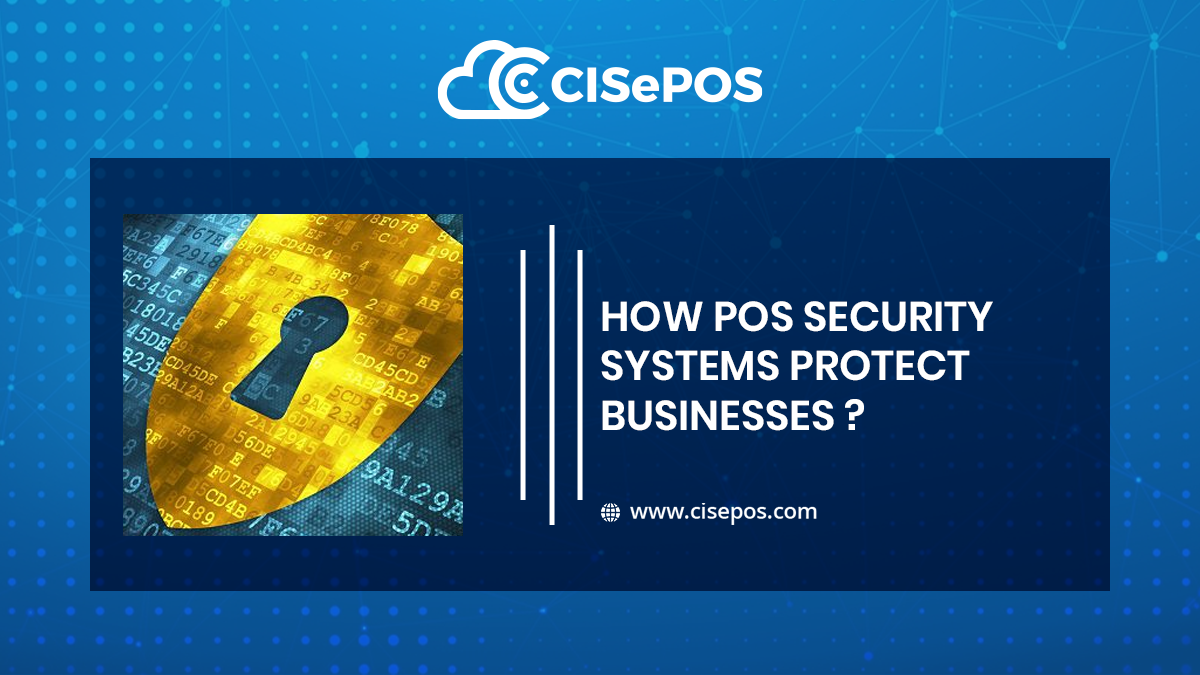
How POS Security Systems Protect Businesses
A point-of-sale (POS) system consists of things like printers for receipts, machines to read cards, screens you can touch, and drawers for cash, along with computer programs. The software part of a POS system manages and saves the information collected when people buy things in stores. If the software isn't there, the sales terminals won't work correctly.
End-to-End Encryption Keeps Data Secure
Encryption is really important for keeping POS systems secure, especially when data
moves through them. Even though lots of stores and sellers use encryption, it doesn't
always mean that the data stays encrypted the whole time.
End-to-end encryption is when information, such as credit card numbers and personal
details, stays encrypted at every step. This makes it tough for hackers to get the data.
When a customer swipes a card or enters information into a website, the system
scrambles the data in a manner that only the receiver possessing a special key can
unscramble.
There are two main types of encryption: data-in-transit and data-at-rest. Just protecting
one leaves data at risk. Data-in-transit is when information moves from one place to
another, like from a POS terminal to a secure network. Attackers can still target inactive
data-at-rest.
Different authorities around the world need different levels of encryption to keep data
safe. The California Consumer Privacy Act, for instance, pushes for stronger encryption
without stating exactly how it should be done. So, stores and other places that keep
customer data should use strong encryption as a safety measure.
POS Security
Point-of-sale security (POS security) is essential for creating secure places where
customers can buy things and finish transactions. These security measures are really
important to stop people who shouldn't be there from getting into electronic payment
systems. This helps lower the chances of credit card info being stolen or used for fraud.
When cybercriminals hack into POS systems, it's a big chance for them to do bad
things. These systems have lots of customer data, like credit card details and personal
info, that could be used to steal money or do identity fraud on a larger scale.
If one application gets hacked, the bad guys might get hold of millions of credit or debit
card details. They could use these for fraud or sell them to other hackers or people who
shouldn't have them. Sometimes, hackers can use these hacked systems to access a
store's big bunch of customer data and other apps and systems they use.
Businesses need to use POS system security to protect their apps, stop unauthorized
access, fight against harmful software on mobiles, and keep hackers away from their
important systems behind the scenes.
POS malware
PoS malware aims to grab details linked to money transactions, particularly credit card
info. However, how it works differs from other data-stealing malware because of the
unique way PoS devices operate. The payment card industry has strict security rules,
ensuring that sensitive payment data, taken from a card’s magnetic strip or chip, gets
encrypted from start to finish—while being sent, received, or stored. Decoding happens
only in the PoS device’s memory (RAM) during processing. PoS malware targets this
unencrypted info in the RAM using a technique called "RAM scraping."
To execute RAM scraping, PoS malware hunts for security weaknesses to get into the
system. This might include using default login details or taking advantage of vulnerable
partner systems. Once inside, the malware selects specific data to steal and sends it to
a distant server. It's common for PoS malware to have secret access points and control
features.
Yet, PoS malware has its limits. The stolen data can't be used for online shopping
because it lacks the CVV2—the three-digit code on the card needed for online
purchases. To use the stolen data, someone would have to physically copy the credit
card.
What is a POS Attack?
A POS attack happens when a hacker targets weak POS systems using harmful software. This lets the hacker swipe financial data kept in the system's temporary memory. They might use keyloggers to record what's typed or RAM scrapers to nab card details before they're encrypted. The harmful software then links up with the attacker's system to sneak the data out of the store's network. Advanced attacks might even use a hacked POS system to get into the store's main network and spread around. Eventually, they could connect to important servers, apps, and databases to sneak out lots of data.
Conclusion
Businesses need strong security measures, especially for point-of-sale security.
Nowadays, POS systems do more than handle transactions; they store sensitive
customer info and confidential business data.
Effective security involves keeping transaction devices updated and secure, using
robust passwords and security checks like two-factor authentication. It also means
Recent Posts
- The Major POS Features and Benefits You Should Know
- Difference Between Cloud Pos Vs Traditional Pos
- Best POS System Benefits for Restaurants in Dubai
- Types Of POS Machine
- Restaurant POS System An Easy Way to Optimize Operations
- Where Does A Point of Sale Transaction Take Place
- Most Common Problems with a POS System
- CRM vs POS
- The Rising Importance of POS Inventory Management
- How POS Integration with E-Commerce is Helpful
- POS Inventory Management System - A Guide
- Android-pos-system
- How POS Security Systems Protect Businesses
- Optimizing Retail Operations with Automated Inventory Management
- Decoding the Advantages and Disadvantages of POS Systems in Retail
- Exploring Types of POS Systems for Retail Success
- Efficient Product Catalog Management Strategies for Retail Businesses
- Toast vs Clover: A Thorough Analysis
- The Necessity of POS System in Grocery Stores
- Shopify POS vs Square POS: Examining the Pros and Cons
- Is POS Integration Essential to Survive In Today’s World?
- Finding the Right POS System for Hair Salon
- The Ideal Café POS System
- Is POS Integration Essential to Survive In Today’s World?
- How to Use POS System - A Guide for Beginners